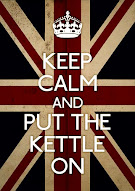
Ronan Bennett & Daniel King
Tuesday October 13 2009
The Guardian
--
Gligoric-Nikolic, Novi Sad 1982. Black to play. Who stands better?
RB Our third shortlisted book for the Guardian Chess Book of the Year award is Winning Chess Middlegames by Ivan Sokolov (New in Chess, GBP 24.95). Like our first shortlisted title, Chess Strategy for Club Players by Herman Grooten, Sokolov's book focuses on the middlegame, but whereas Grooten emphasises the dynamic aspects of the game, here the stress is on pawn structure. In an introduction Michael Adams makes the point that we often learn opening lines without giving serious thought to the kind of pawn structures they create.
Sokolov arranges his material into four different types of pawn structure: doubled pawns; isolated pawns; parallel hanging pawns in the centre; and pawn majority in the centre, further dividing these into subgroups. He then analyses the structures with reference to the opening. Chapter 1, for example, deals with doubled pawns arising mainly from the Nimzo. Chapter 2, on isolated pawns, looks predominantly at lines in the Queen's Gambit Declined. The essential point - but one often overlooked - is that from the opening we should be able to anticipate the structure of the middlegame.
The diagram position arose out of a Nimzo (H?bner Variation), with the characteristic doubled pawns on c3 and c4. White has tried to exploit the semi-open b-file to create threats against the enemy king. His rooks are doubled, the bishop is on b5, and the queen lurks on a3. On the other wing, Black's pawns are advancing, supported by the rooks. Who stands better?
Fritz assesses the position as roughly equal. But Sokolov is unequivocal: "A sorry sight. On the queenside White is not able to create a single threat, while on the other side of the board the battle is lost." The computer is wrong. White is dead lost. After Black's simple defensive expedient 1...Na6-b8, the game continued 2 Nf1 g4 3 f4 exf4 4 Bxf4 Ng6 5 Rf2 h4 and the pawns quickly smashed the white king's position.
--
guardian.co.uk Copyright (c) Guardian News and Media Limited. 2009





croppedsidebar.jpg)

.png)

















